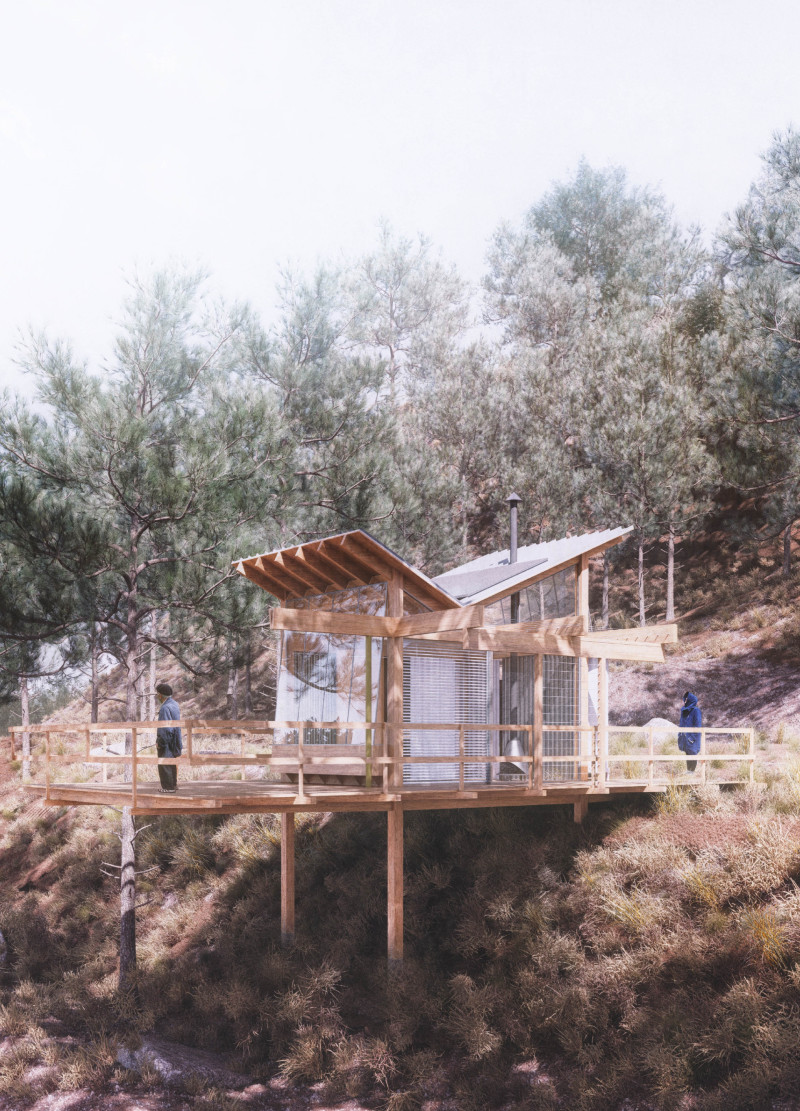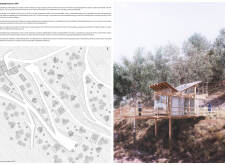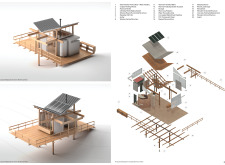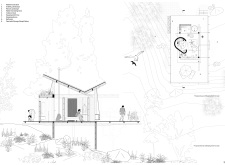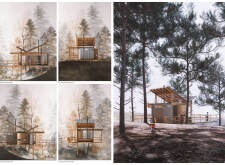5 key facts about this project
"Sleeping Pods on a Cliff" is an architectural design aimed at creating small, self-sufficient dwellings that integrate with their natural environment. Set against a distinctive landscape, the pods are intended to provide comfortable shelter while reflecting a commitment to sustainability. The project emphasizes energy efficiency and low environmental impact through thoughtful design principles and construction methods.
Concept and Sustainability
The design focuses on promoting sustainable living through clear construction techniques that facilitate easy assembly. Achieving net zero operational and embodied carbon is a primary goal. The project also considers land use and biodiversity, creating spaces that contribute to health and well-being while respecting the landscape.
Design Elements
The design effectively balances natural light and thermal comfort. The layout allows for good airflow and includes shading systems to avoid overheating. Openings are strategically placed to maximize daylight without increasing energy use. Additionally, systems for water collection, solar energy, and heating are integrated, enhancing the self-sufficiency of each unit.
Structural Assembly
A straightforward assembly process forms the basis of this design, starting with a simple vertical structure. This framework ensures stability and ease of construction. It supports components such as the roof, bathroom, glazing, and sleeping alcove, allowing for efficient use of materials and space while maintaining architectural integrity.
Material Integration
Careful material selection is vital to the overall project. Locally sourced materials not only contribute to sustainability but also connect the pods to their surroundings. The use of a wooden vertical structure, plywood panels, and copper roofing creates a durable yet visually appealing environment. The aluminum glazing system ensures proper insulation while providing ample light.
The Sleeping Pods provide a thoughtful approach to living in harmony with the environment. Their design encourages an easy connection between indoor and outdoor spaces, reflecting principles of sustainability and efficient living through their functional arrangements and material choices.


